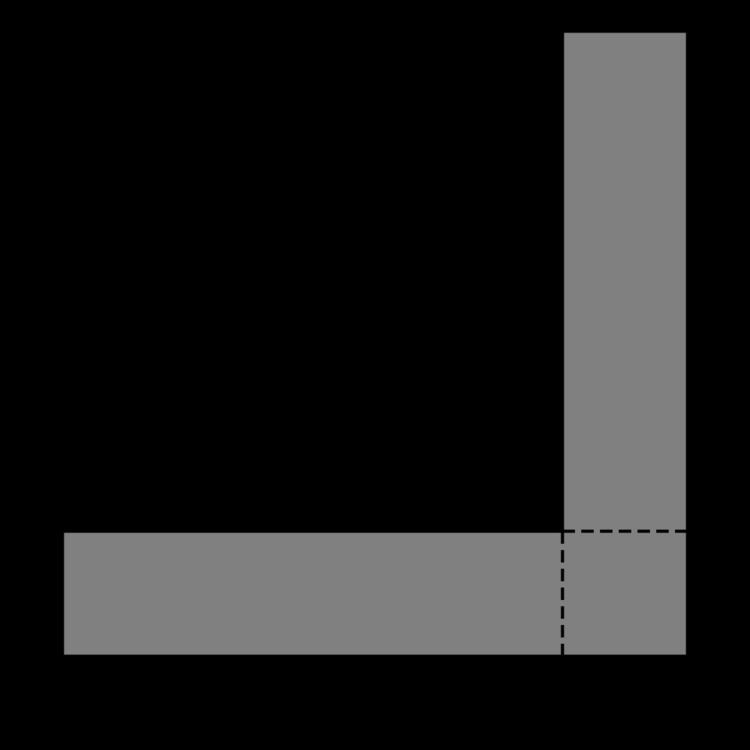 | ||
In mathematics, the difference of two squares is a squared (multiplied by itself) number subtracted from another squared number. Every difference of squares may be factored according to the identity
Contents
- Proof
- Geometrical demonstrations
- Factorisation of polynomials
- Complex number case sum of two squares
- Rationalising denominators
- Mental arithmetic
- Difference of two perfect squares
- Generalizations
- Difference of two nth powers
- References
Proof
The proof of the factorization identity is straightforward. Starting from the left-hand side, apply the distributive law to get
By the commutative law, the middle two terms cancel:
leaving
The resulting identity is one of the most commonly used in mathematics. Among many uses, it gives a simple proof of the AM–GM inequality in two variables.
The proof just given indicates the scope of the identity in abstract algebra: it will hold in any commutative ring R.
Conversely, if this identity holds in a ring R for all pairs of elements a and b of the ring, then R is commutative. To see this, apply the distributive law to the right-hand side of the original equation and get
and for this to be equal to
for all pairs a, b of elements of R, so the ring R is commutative.
Geometrical demonstrations
The difference of two squares can also be illustrated geometrically as the difference of two square areas in a plane. In the diagram, the shaded part represents the difference between the areas of the two squares, i.e.
Another geometric proof proceeds as follows: We start with the figure shown in the first diagram below, a large square with a smaller square removed from it. The side of the entire square is a, and the side of the small removed square is b. The area of the shaded region is
Factorisation of polynomials
The formula for the difference of two squares can be used for factoring polynomials that contain the square of a first quantity minus the square of a second quantity. For example, the polynomial
As a second example, the first two terms of
Complex number case: sum of two squares
The difference of two squares is used to find the linear factors of the sum of two squares, using complex number coefficients.
For example, the complex roots of
Therefore the linear factors are
Since the two factors found by this method are complex conjugates, we can use this in reverse as a method of multiplying a complex number to get a real number. This is used to get real denominators in complex fractions.
Rationalising denominators
The difference of two squares can also be used in the rationalising of irrational denominators. This is a method for removing surds from expressions (or at least moving them), applying to division by some combinations involving square roots.
For example: The denominator of
Here, the irrational denominator
Mental arithmetic
The difference of two squares can also be used as an arithmetical short cut. If you are multiplying two numbers whose average is a number which is easily squared the difference of two squares can be used to give you the product of the original two numbers.
For example:
Which means using the difference of two squares
Difference of two perfect squares
The difference of two consecutive perfect squares is the sum of the two bases n and n+1. This can be seen as follows:
Therefore the difference of two consecutive perfect squares is an odd number. Similarly, the difference of two arbitrary perfect squares is calculated as follows:
Therefore the difference of two even perfect squares is a multiple of 4 and the difference of two odd perfect squares is a multiple of 8.
Generalizations
The identity also holds in inner product spaces over the field of real numbers, such as for dot product of Euclidean vectors:
The proof is identical. By the way, assuming that a and b have equal norms (which means that their dot squares are equal), it demonstrates analytically the fact that two diagonals of a rhombus are perpendicular.
Difference of two nth powers
If a and b are two elements of a commutative ring R, then
